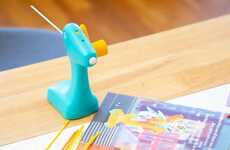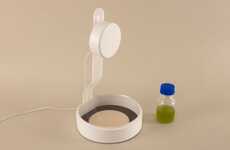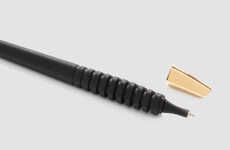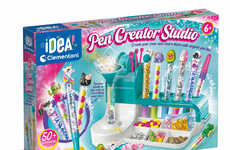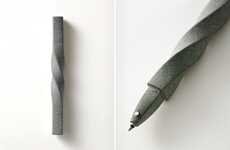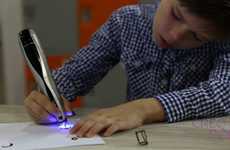
The Creopop 3D Pen Uses Ink That Solidifies When Exposed to Ultraviolet Light
Rahul Kalvapalle — June 9, 2014 — Tech
With the deluge of 3D pens either hitting the market or being developed in recent years, you could be forgiven for dismissing the CreoPop as just another 3D pen with nothing particularly unique about it. You'd also be wrong.
What's ingenious about the CreoPop pen is that it uses light-sensitive ink that solidifies when exposed to UV light, allowing users to create 3D art. The CreoPop pen is safer than other 3D pens that use heated plastic filaments that could injure users, particularly children, if they are not careful.
The CreoPop pen uses three UV light diodes that harden the paste-like ink that comes out of the nozzle. The pen's battery is charged via a micro-USB port, meaning it can be operated without an annoying power cord dangling against your wrist and interrupting your creative flow.
What's ingenious about the CreoPop pen is that it uses light-sensitive ink that solidifies when exposed to UV light, allowing users to create 3D art. The CreoPop pen is safer than other 3D pens that use heated plastic filaments that could injure users, particularly children, if they are not careful.
The CreoPop pen uses three UV light diodes that harden the paste-like ink that comes out of the nozzle. The pen's battery is charged via a micro-USB port, meaning it can be operated without an annoying power cord dangling against your wrist and interrupting your creative flow.
Trend Themes
1. Light-sensitive 3D Pens - The use of ink that solidifies when exposed to UV light for 3D printing opens up new possibilities for creativity and safety.
2. Safer 3D Printing - 3D pens that utilize alternative methods to heated plastic filaments offer a safer option and improve accessibility to users of all ages.
3. Wireless Art Creation - The ability to operate 3D pens through micro-USB charging allows users to create without interruption and may open up new possibilities for consumer mobile art products.
Industry Implications
1. Education - The use of safer 3D printing technology has potential in art and design curriculums for younger students to explore and create in a safe and educational environment.
2. Consumer Electronics - The trend for light-sensitive ink 3D pens could inspire the creation of more wireless & portable 3D printing products for hobbyists and art enthusiasts.
3. Construction - Developing light-sensitive 3D printing technology could improve safety and efficiency in construction processes with reduced hazardous materials and improved methods of material deposition.
3.3
Score
Popularity
Activity
Freshness



